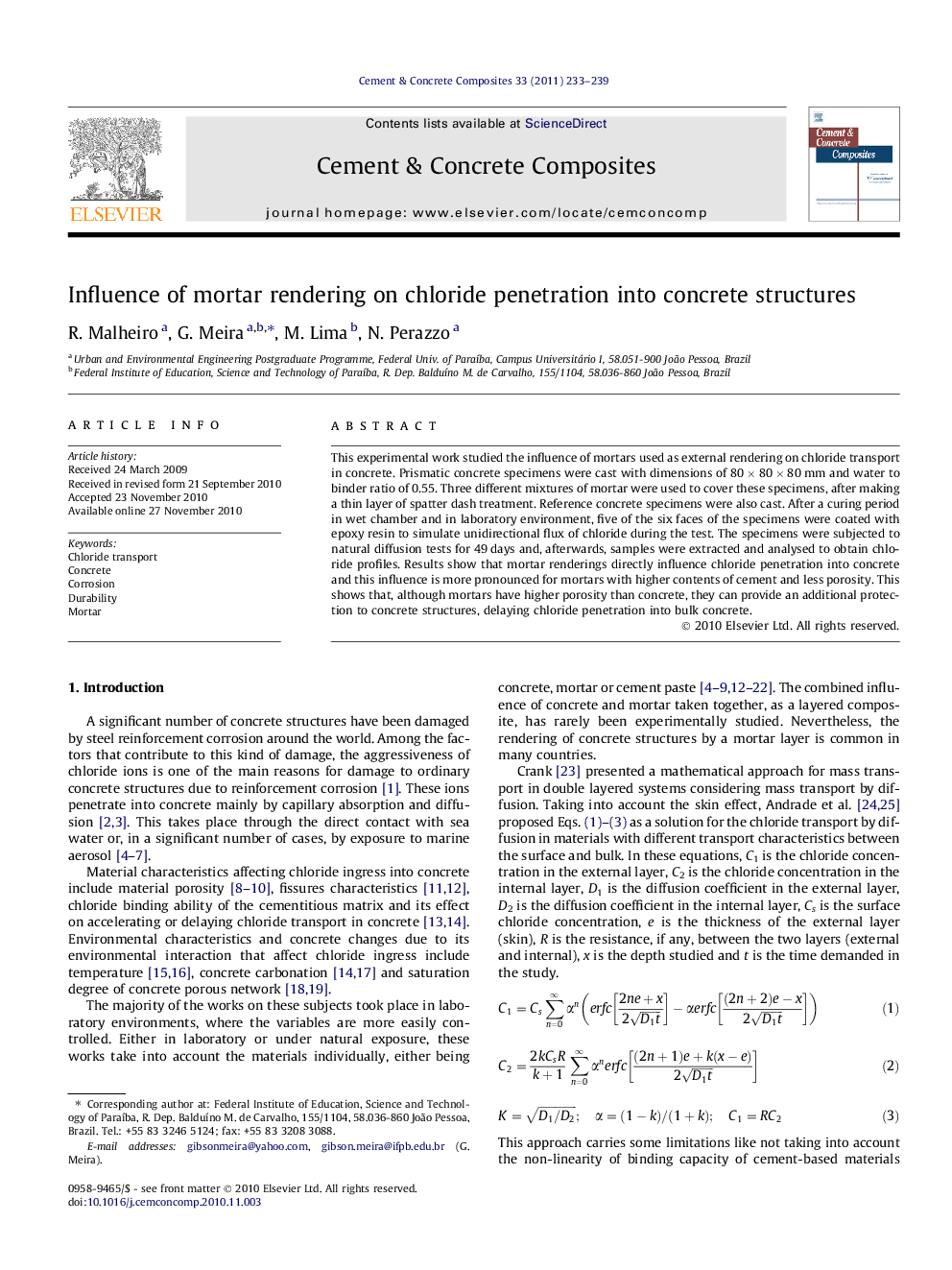| Article ID | Journal | Published Year | Pages | File Type |
|---|---|---|---|---|
| 10621914 | Cement and Concrete Composites | 2011 | 7 Pages |
Abstract
This experimental work studied the influence of mortars used as external rendering on chloride transport in concrete. Prismatic concrete specimens were cast with dimensions of 80Â ÃÂ 80Â ÃÂ 80Â mm and water to binder ratio of 0.55. Three different mixtures of mortar were used to cover these specimens, after making a thin layer of spatter dash treatment. Reference concrete specimens were also cast. After a curing period in wet chamber and in laboratory environment, five of the six faces of the specimens were coated with epoxy resin to simulate unidirectional flux of chloride during the test. The specimens were subjected to natural diffusion tests for 49Â days and, afterwards, samples were extracted and analysed to obtain chloride profiles. Results show that mortar renderings directly influence chloride penetration into concrete and this influence is more pronounced for mortars with higher contents of cement and less porosity. This shows that, although mortars have higher porosity than concrete, they can provide an additional protection to concrete structures, delaying chloride penetration into bulk concrete.
Related Topics
Physical Sciences and Engineering
Engineering
Industrial and Manufacturing Engineering
Authors
R. Malheiro, G. Meira, M. Lima, N. Perazzo,
